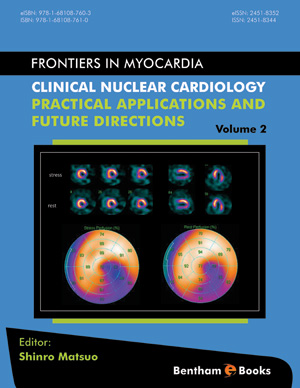Abstract
With the increasing availability of positron emission tomography (PET) myocardial perfusion imaging (MPI), PET MPI and the absolute quantification of myocardial blood flow (MBF) have become popular in clinical settings [1]. PET MPI shows higher diagnostic accuracy than that of single-photon emission computed tomography (SPECT) and shows predictive value for cardiac events [2, 3]. Quantitative MBF assessment also provides important additional diagnostic or prognostic information over that attained through conventional visual assessment [4]. The success of MBF quantification using PET/computed tomography (CT) has increased demand for this quantitative diagnostic approach to be more accessible. In this regard, MBF quantification approaches have been developed using several other diagnostic imaging modalities including SPECT, dynamic CT perfusion imaging, and cardiac magnetic resonance (CMR). In the United States (US), the Food and Drug Administration (FDA) has approved 13N-ammonia (13N-NH3) and 82rubidium (82Rb) for clinical use [5]. The Japanese Ministry of Health, Labour and Welfare (JMHLW) approved 13N-NH3 PET MPI for diagnosis of coronary artery disease (CAD) in March 2012 but has not approved other PET MPI tracers [6, 7]. Since 13N-NH3 PET MPI will be addressed elsewhere in this e-book, this review will address the clinical aspects of PET/CT MPI using other PET flow tracers.
Keywords: Blood Flow, Coronary Artery Disease, Endothelial Function, Flow Reserve, Positron Emission Tomography, Quantification.






















